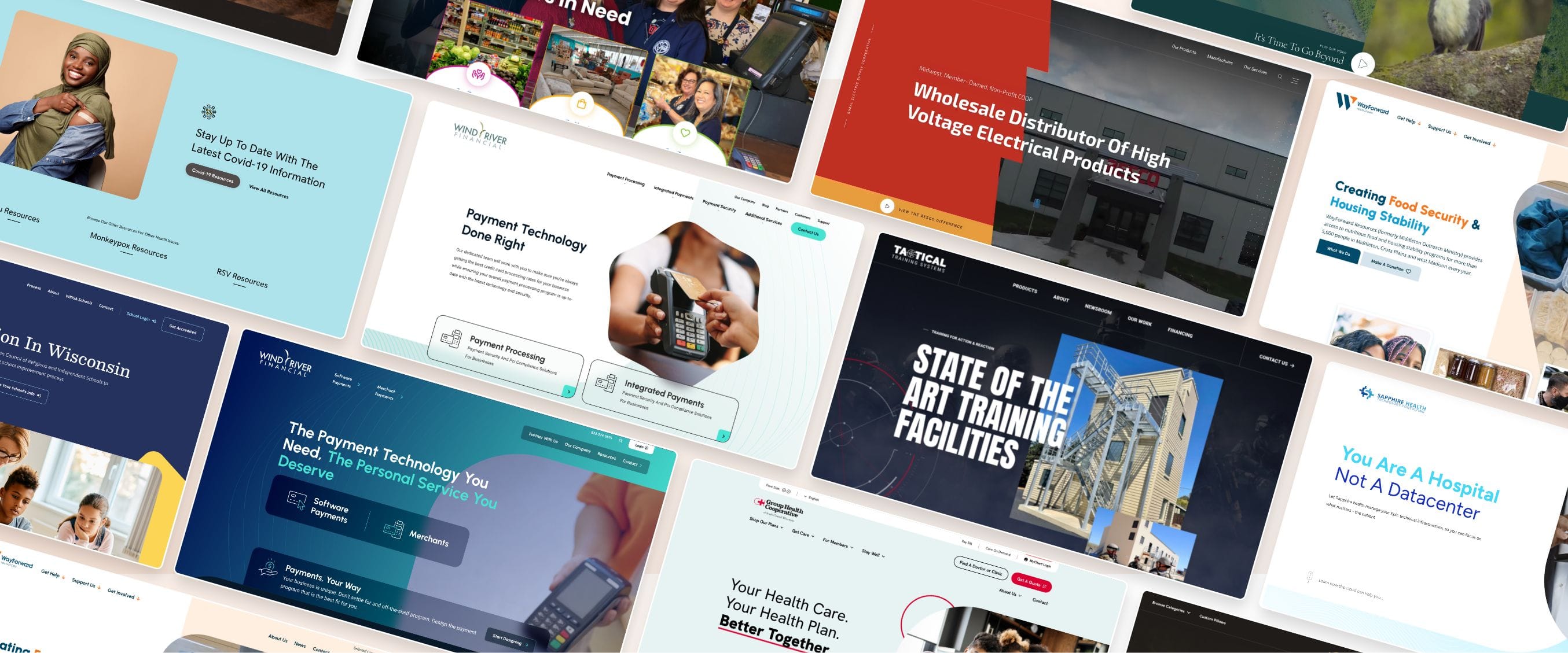Skilled Website Design for Businesses Looking to Boost Sales
Skilled Website Design for Businesses Looking to Boost Sales
Blog Article
Leading Tips for Producing an Impactful Website Design That Transforms
In today's digital landscape, the significance of an impactful site layout can not be overstated, particularly when it concerns converting site visitors into clients. To accomplish this, one need to think about a range of elements, including comprehending the target market, prioritizing user experience, and optimizing for mobile platforms. Furthermore, the calculated usage of compelling call-to-actions and a well-defined visual power structure plays a vital duty in assisting users with their trip. As we check out these essential aspects, it becomes obvious that the success of your website depends upon greater than simply aesthetic appeal; it requires a thoughtful approach to design and performance.

Understand Your Target Target Market
Recognizing your target market is fundamental to effective web site style, as it lays the foundation for creating an appealing user experience. Identifying who your customers are, including their demographics, preferences, and habits, enables developers to customize the website's content, format, and capability to satisfy certain requirements.
Conducting extensive marketing research is essential in this procedure. Studies, meetings, and analytics can supply useful insights right into customer assumptions and discomfort factors. By compiling this information, designers can create individual personalities that represent different sections of the target market, guaranteeing that layout choices are informed and pertinent.
Moreover, recognizing the target market aids in picking proper design components such as color design, typography, and imagery that reverberate with customers. A website that talks straight to its audience cultivates a feeling of connection and count on, encouraging longer brows through and greater conversion rates.
Ultimately, a user-centered strategy to internet site layout not just enhances user contentment but likewise supports organization purposes by driving involvement and loyalty. By focusing on the requirements and choices of the target audience, a site can properly offer its objective and accomplish desired end results.
Prioritize Individual Experience
To boost the overall effectiveness of a site, prioritizing user experience (UX) is important (Website Design). A properly designed UX makes certain that site visitors can browse the website easily, find information promptly, and engage with material meaningfully. This results in raised user satisfaction and higher conversion rates
Begin by applying intuitive navigating. Menus ought to be realistically structured, permitting users to locate key areas of the site with marginal effort. Consistency in layout components, such as color design and font styles, promotes knowledge, which is crucial for preserving customer interaction.
Additionally, take into consideration the loading rate of your site. A hold-up of simply a couple of seconds can bring about considerable drop-offs, as individuals are much less likely to wait on a slow-loading web page. Enhancing photos and optimizing code can enhance performance and retain site visitors.
Moreover, clarity in material presentation is vital. Use concise, appealing language and separate message with visuals to boost readability. By prioritizing user experience, you not just create a much more satisfying environment for visitors however also reinforce your brand's integrity. Inevitably, an emphasis on UX is an investment in the long-term success of your internet site.
Maximize for Mobile Devices
Maximizing for mobile gadgets is critical in today's electronic landscape, where a boosting number of customers access web sites with smart devices and tablet computers. A mobile-friendly layout not just improves customer experience yet likewise plays a considerable function in enhancing online search engine rankings. To achieve this, it is vital to embrace a responsive design that instantly adapts to various screen sizes and orientations.

Filling rate is one more vital aspect; click for more info mobile customers are usually less client and expect rapid access to details. By prioritizing mobile optimization, you make certain that your internet site continues to be competitive and effectively engages a more comprehensive audience.
Usage Engaging Call-to-Actions
A website's performance usually hinges on its capability to guide site visitors towards preferred actions, making compelling call-to-actions (CTAs) important parts of design. CTAs function as the crucial factors that guide users to engage with the website, whether that suggests making an acquisition, enrolling in an e-newsletter, or downloading a resource.
To develop reliable CTAs, clarity is vital. Usage succinct language that clearly interacts the activity you want the user to take.
Additionally, consider using directional cues, such as arrowheads or images, to guide users towards these buttons. By concentrating on these components, businesses can considerably enhance user involvement, driving conversions and eventually achieving their site's objectives.
Emphasis on Visual Pecking Order
Reliable website style counts heavily on a well-structured aesthetic pecking order that guides individuals with web content flawlessly. By organizing aspects in a fashion that prioritizes information, designers can improve customer visit the website experience and promote decision-making. This entails utilizing dimension, shade, contrast, and spacing strategically to attract focus to one of the most important elements of a web page.
Using bigger font styles for headings and subheadings develops a clear distinction between different areas, permitting customers to check material easily. In addition, employing contrasting colors for switches and calls-to-action can capture user interest and urge communication. Whitespace is another essential element; it avoids clutter and allows users to focus on crucial messages without diversions.
Pictures and graphics must enhance the message while also adhering to the recognized pecking order, reinforcing the overall message (Website Design). Consistency in style components, such as color design and typography, further strengthens the visual pecking order, making navigating intuitive

Verdict
Finally, efficient website layout demands a comprehensive understanding of the target audience, prioritization of individual experience, and mobile optimization. The critical use engaging call-to-actions and a distinct visual hierarchy further improves customer involvement. By carrying out these concepts, internet sites can achieve higher conversion rates, making sure that style aspects not just bring in site visitors but also facilitate seamless navigation and interaction. Eventually, a well-executed web site design works as a vital component in driving individual actions and accomplishing organization goals.
Report this page